
From a manufacturer with a long history of producing motorcycles designed to be fun to ride and fun to control, Kawasaki’s new EV models offer a light-hearted solution to urban commuting. The Ninja e-1 gives you a chance to experience the joy that Kawasaki motorcycles deliver and transform your commute from a grind into something to look forward to.
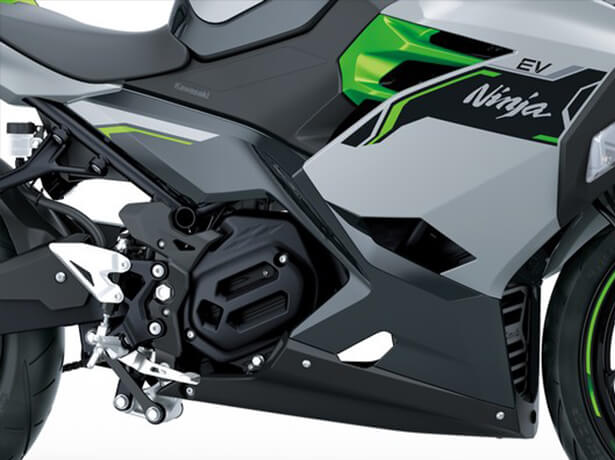
Kawasaki’s first roadgoing EVs are powered by a compact brushless electric motor offering strong off-the-line acceleration and low-end response. Rider-selectable power levels contribute to rider confidence, while unique EV features like e-boost and WALK Mode add to the fun experience. The rider-friendly electric motor is also clean and quiet.
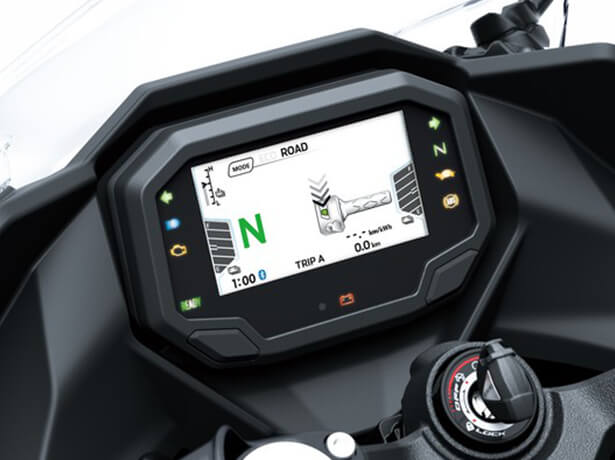
To start the Ninja e-1, turn the ignition ON, and the gear position indicator will show “N”. When you put the side stand up and press the “Drive Ready” button, the gear position indicator will change to “D” and the “READY” light will illuminate, indicating that you’re ready to go. (If you put the side stand down again, the “READY” will turn off and gear position indicator will change back to “N.”)
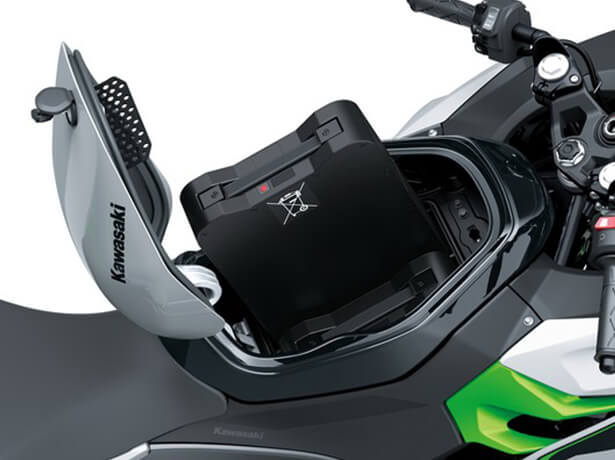
The Ninja e-1 feature dual removable lithium-ion batteries. Multiple charging options add flexibility for minimal added inconvenience to your daily routine.
Three charging options are available:
1. Charging with a charging dock (batteries removed)
2. Charging without a charging dock (batteries removed)
3. Offboard† charging with the batteries in place
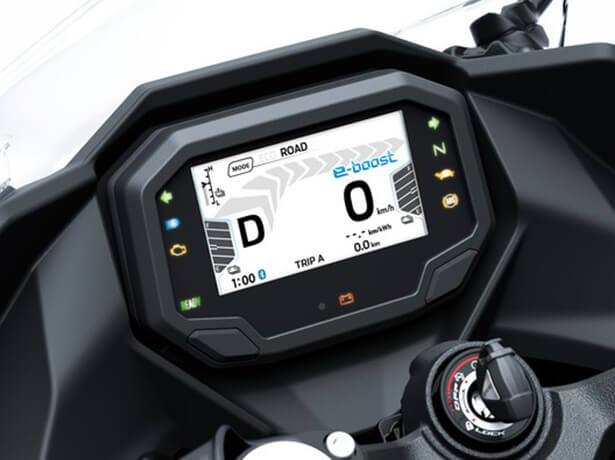
In addition to normal operation (ROAD), riders may also choose speed-limited operation (ECO).
Top speed in ROAD Mode is 88 km/h, while top speed in ECO Mode is limited to 64 km/h.
Cruising range is as much as 72 km (per WMTC-Class 1). In ECO Mode, which has a reduced top speed and milder response compared to ROAD Mode, riders may find that they are able to ride farther.
When the batteries’ state of charge drops below 35% (34% or less), the bike will switch to limited-power operation (indicated by a turtle icon on the instrument panel), and the e-boost function will be unavailable.
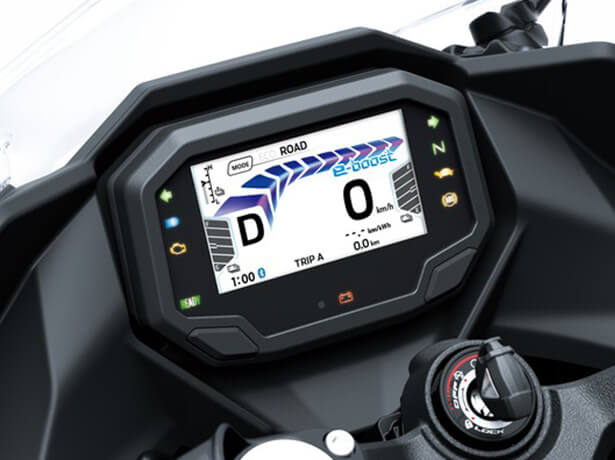
With e-boost, riders can riders briefly tap into extra power for stronger acceleration and a higher top speed – handy when a little extra power is needed.
To prevent overheating, the e-boost operation is limited to 15 seconds.
When activated, acceleration is stronger when twisting the throttle and top speed is increased: 64 km/h >> 75 km/h (ECO), 88 km/h >> 99 km/h† (ROAD).
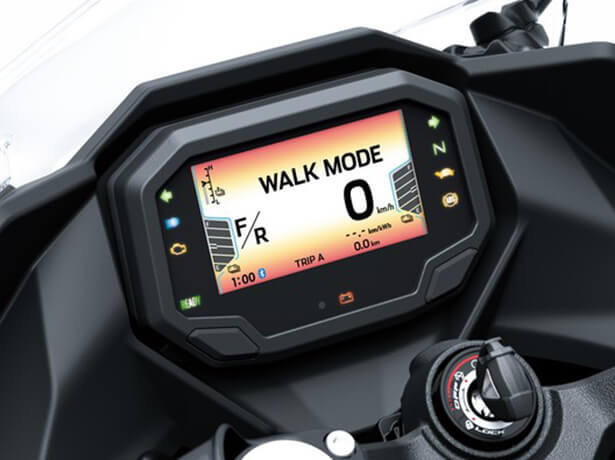
This convenient mode assists with manoeuvring in a parking lot.
When all conditions have been met (bike stopped, throttle OFF), WALK Mode is activated by pressing and holding the Mode button. Once activated, the screen background turns red to clearly distinguish from normal operation.
When engaged, opening the throttle moves the bike forward at walking speed (approximately 5 km/h).
Closing the throttle past the “zero” point moves the bike in reverse. Reverse speed is approximately 3 km/h.

The Ninja e-1 feature a trellis frame similar in design to that of Kawasaki’s flagship model, the Ninja H2. Kawasaki’s advanced dynamic rigidity analysis was used to ensure optimum rigidity with light weight. The trellis-style frame design contributes significantly to the bikes’ low curb mass.
Short 1,370 mm wheelbase combined with optimised chassis geometry (swingarm pivot position and caster angle) deliver light, natural handling and a sporty character.
* With the motor significantly more compact than the 400cc-class engine for which the base frame was designed, the frame was reinforced to ensure the necessary overall rigidity. To position the motor mounts ideally, the frame line was revised.
* Mounting the motor low in the chassis helps lower the centre of gravity, contributing to the light, motorcycle-style handling.
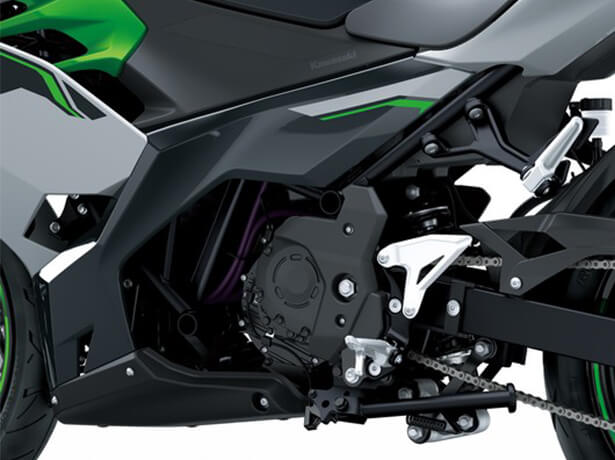
A rigid ø41 mm telescopic fork delivers excellent suspension action. The front wheel feels reassuringly planted, direction changes are facilitated (even when the bike is fairly upright – handy when navigating traffic jams), and overall the suspension offers the plushness of a larger-class bike.
4-way rear preload adjustability allows riders to adjust the rear ride height, as well as set up the bike to accommodate a passenger or luggage.
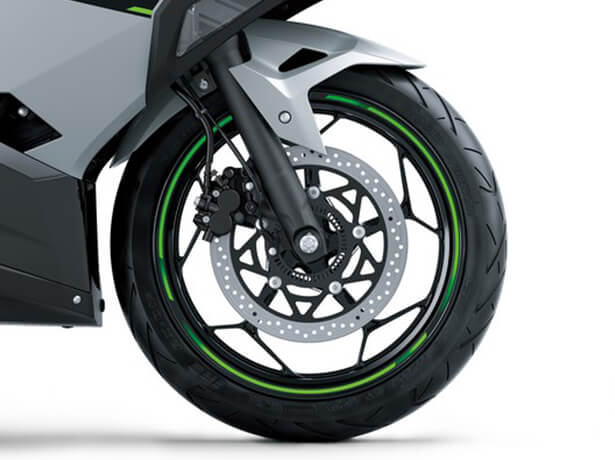
Large ø290 mm front disc is gripped by a dual-piston caliper.
F: 100/80-17M/C 52S
At the rear a ø220 mm disc is slowed by a dual-piston caliper.
R: 130/70-17M/C 62S
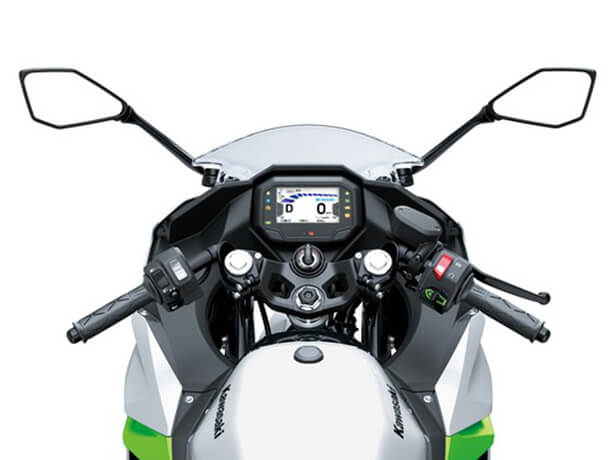
On the Ninja e-1, clip-on handlebars attach to the top of the fork tubes, which protrude above the upper triple clamp. The grips feature a slight down angle, contributing to both comfort and sporty looks.
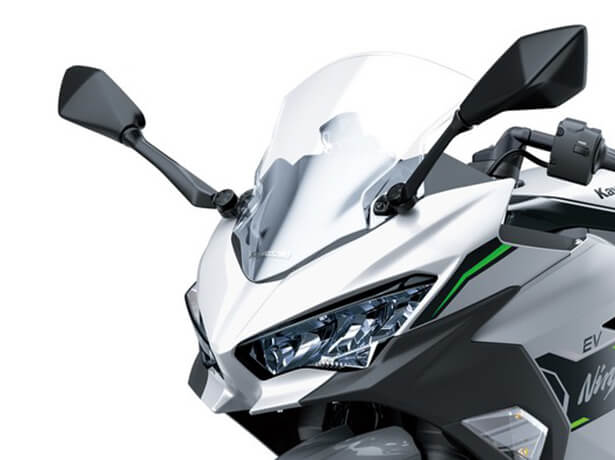
Like its Ninja brethren, the Ninja e-1 features seductive, full-fairing bodywork. The large-volume bodywork attracts attention and gives the impression of a larger machine. This impression is reinforced by the high-class design and superb fit and finish, which are comparable to bikes from a larger-displacement class. All-LED lighting contributes to a modern, high-tech image.
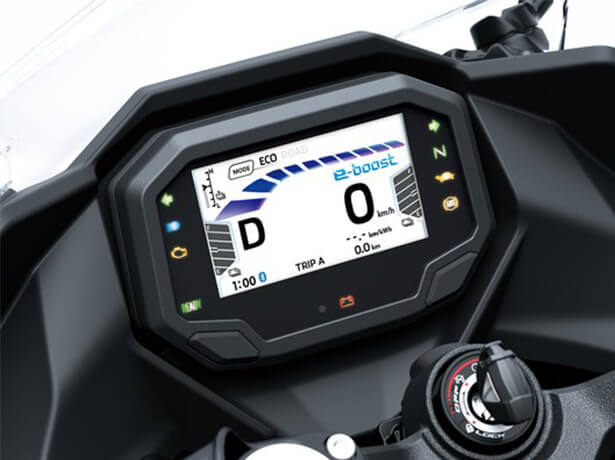
4.3” all-digital TFT colour instrumentation gives the cockpit a high-tech, high-grade appearance.
High-grade full colour display features TFT (thin-film transistor) technology, delivering a high level of visibility. The screen’s background colour automatically changes from white to black when ambient light is low, or it can be manually set to black or white per the rider’s preference. Similarly, screen brightness is adjusted automatically to suit available ambient light, with two rider-selectable levels of brightness available.
Display functions include: riding mode indicator, e-boost gauge, battery pack temperature gauge, battery pack charge level gauges, clock, connected device notifications (Bluetooth, mail, telephone), shift position indicator (N, D, F, R), speedometer, odometer, dual trip meters, current electric consumption, average electric consumption, cruising range, and a host of indicators.